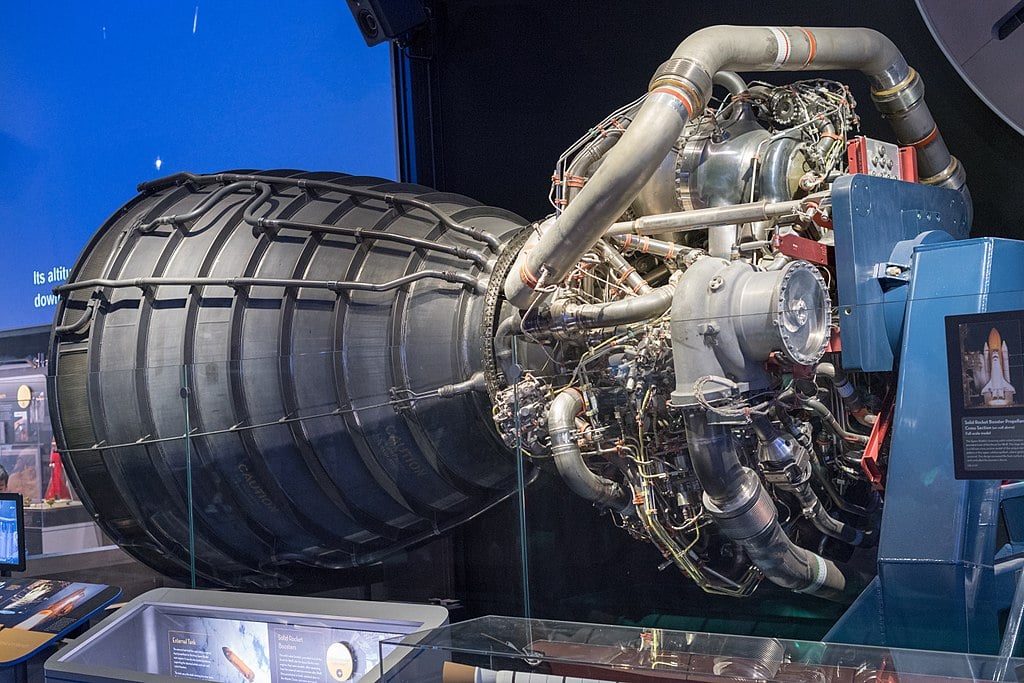In a collaboration with NASA, Aerojet Rocketdyne finished the RS-25 Engine that is set to improve upon the agency’s heavy-lift Space Launch System and bring it to the highest thrust levels yet.
Earlier today, there was a 260-second “hot fire test”, in which the RS-25 Engine exceeded the original design’s thrust level by a whopping 113 percent. While the first four flights of the NASA Space Launch System will only use 109 percent of the rated thrust, the new RS-25 engine will be rated at 111 percent as a baseline.
“Increased thrust requirements for the RS-25 are just one of the many changes in the SLS rocket’s performance that will facilitate our nation’s deep space exploration goals and objectives,” said Dan Adamski, RS-25 program director at Aerojet Rocketdyne in a recent press release. “While we can analytically calculate engine performance and structural capabilities at these higher power levels, actually demonstrating that performance with an engine hot fire provides the added confidence that these engines will meet all specification requirements demanded of SLS.”
Essentially, the RS-25 engine is an updated version of the engine that was originally used in order to propel a NASA space shuttle into space. The Space Launch System is actually designed for missions that extend beyond low-Earth orbit, and can theoretically transport crew and cargo to the Moon or beyond. With a weight capacity of more than 45 metric tons, the NASA Space Launch System can shift a huge amount of weight and transport a large payload to distant destinations. Each Space Launch System configuration is powered by four models of the RS-25 engine, and these new configurations should add a good amount of power to the existing setup.
According to Eileen Drake, the CEO and president of Aerojet Rocketdyne, “One of the key features of SLS is its versatility to support human and robotic missions, launching spacecraft, habitats and astronauts to a variety of deep space destinations…The lifting power of the SLS will permit NASA to get bigger payloads to distant planets more quickly than any other launcher operating today.”
The first NASA Space Launch System mission that will be powered by the new RS-25 engine is set to start in the 2020 fiscal year, which will bring an uncrewed version of the NASA Orion spacecraft on a mission that extends far beyond the moon. In fact, the distance the craft will travel surpasses any mission that a human-rated vehicle has ever traveled. If the mission is a success, we’ll see an RS-25 engine powering a similar NASA mission – except this time with a crew on board.
This collaboration between Aerojet Rocketdyne and NASA may hold great potential for the future of space travel. By providing the thrust necessary to carry a manned aircraft far beyond the distances we’ve already traveled, we may be well on our way to opening up travel to other planets like Mars.
Mars has long been a lofty goal of both NASA and private space agencies like SpaceX and Boeing, and there are a number of issues that need to be ironed out before we can actually put a human on the planet’s surface. The RS-25 engine powering the Space Launch System should give us the tools we need to transport humans further into space, but actually getting a craft to further distances is the least of our issues. Hopefully, with continued technological advancement we’ll be able to address issues such as health concerns of the astronauts on such a long journey and move one step closer to extending our reach into outer space.





